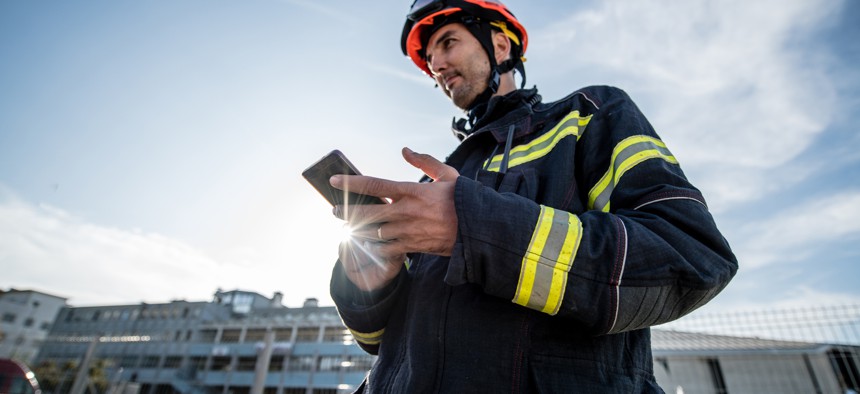GIS amplifies emergency response

GettyImages/AlenaPaulus
Public safety agencies are leveraging GIS-based apps and dashboards to improve response and operational efficiencies.
Digital maps and online dashboards are increasingly enlisted by law enforcement, fire departments, rescue and emergency medical teams to mitigate risk in everything from dispatch services to field data collection.
In a new e-book titled Keeping People Safe: GIS for Public Safety, experts at the location intelligence firm Esri present a collection of case studies and strategies describing how geographic data and GIS-based tools have helped emergency response agencies. The e-book aims to help educate state and local organizations on how they can incorporate these tools and processes into their response efforts.
In Illinois, the transition to Next Generation 911, the national effort to migrate 911 public safety answering points from analog to IP-based operations, will allow the use of GIS to improve address accuracy, shortening response times.
Geospatial routing will replace the standard Master Street Address Guide, a decades-old tabular database that ties phone numbers to street addresses. The new system will allow dispatchers to send responders turn-by-turn directions and even give them to access z-axis or vertical data to help pinpoint callers on specific floors within buildings.
In Pasadena, Calif., the fire department integrated an online dashboard into its public safety planning efforts ahead of the annual Rose Parade. Using sensors on parade floats, social media feeds and handheld devices carried by personnel, officials tracked the progress of floats and potential hazards on a shared map of the parade's route. The real-time visualization enabled Pasadena officials to identify possible hazards, provide up-to-date weather warnings, monitor medical incidents and track parade and fire department assets.
GIS capabilities are also crucial for mitigating climate-related initiatives. With wildfires becoming more frequent, Tuscon, Ariz., is using GIS-based mobile apps to collect fire hydrant inspection data to confirm their location and ensure they are in working order. Replacing paper forms with the app helped Tucson’s Northwest Fire District (NWFD) officials inspect and upload the real-time operational status of 4,000 hydrants in 60 days and reliably monitor nearly 10,000 fire hydrants.
Building on the success of the hydrant inspection app, the city partnered with Esri to develop a Pre-incident Plan Locator app that allowed firefighters conducting building inspections to input details about physical aspects -- such as the location of electric, gas and water shutoff points – for each address and assign risk assessment scores. The data is reflected on a color-coded digital map, providing emergency managers a readily accessible visual representation of the risk level that can be referenced while responders are en route.
“The evolution from a paper-based system to field apps has been very well received,” NWFD senior GIS analyst Jim Long said. “Going digital means firefighters can easily collect, upload and view field data on their mobile devices.





